-
Adopt
-
Veterinary Care
Services
Client Information
- What to Expect – Angell Boston
- Client Rights and Responsibilities
- Payments / Financial Assistance
- Pharmacy
- Client Policies
- Our Doctors
- Grief Support / Counseling
- Directions and Parking
- Helpful “How-to” Pet Care
Online Payments
Referrals
- Referral Forms/Contact
- Direct Connect
- Referring Veterinarian Portal
- Clinical Articles
- Partners in Care Newsletter
CE, Internships & Alumni Info
CE Seminar Schedule
Emergency: Boston
Emergency: Waltham
Poison Control Hotline
-
Programs & Resources
- Careers
-
Donate Now
Who doesn’t love walking their dog? This activity can be pleasurable for any dog and its walker, or it can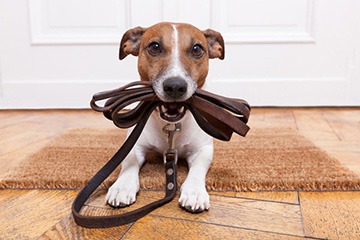 become a battle deciding who goes where and when. Though humans know the path they want to take, as well as their hoped-for pace, a dog on a walk is a different animal. Since a dog has 200 million odor receptors, their walk may be largely governed by what they smell. Did another dog pee here? Did a squirrel walk that way? Do I smell a CAT? These discoveries often greatly control a dog’s direction and velocity of walking. Dogs are not born with the motivation to walk next to a human in every environment, and from an early age, many learn that pulling on the leash gets them where they want to go. Fortunately, there are ways to teach appropriate alternative behaviors, including loose-leash walking.
become a battle deciding who goes where and when. Though humans know the path they want to take, as well as their hoped-for pace, a dog on a walk is a different animal. Since a dog has 200 million odor receptors, their walk may be largely governed by what they smell. Did another dog pee here? Did a squirrel walk that way? Do I smell a CAT? These discoveries often greatly control a dog’s direction and velocity of walking. Dogs are not born with the motivation to walk next to a human in every environment, and from an early age, many learn that pulling on the leash gets them where they want to go. Fortunately, there are ways to teach appropriate alternative behaviors, including loose-leash walking.
Before beginning training to walk with your dog, it is important to identify what types of things they are willing to work for. Small, fragrant (meaning stinky) training treats work best. You may need to try a few options to find out which types of treats your dog prefers the most.
Walking Inside
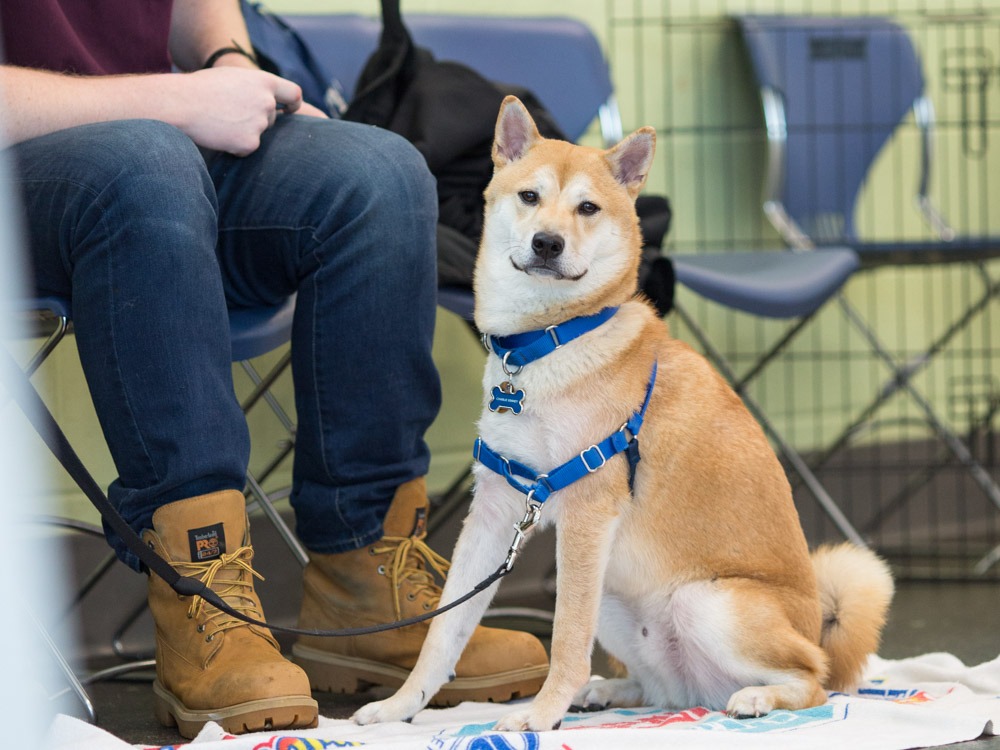 Although it may feel counterintuitive, starting indoors is the best way to lay a strong foundation for leash walking. There are fewer distractions, so the task is clear for the dog.
Although it may feel counterintuitive, starting indoors is the best way to lay a strong foundation for leash walking. There are fewer distractions, so the task is clear for the dog.
- Hold the leash loosely and have a few of the small, tasty treats in your left hand. It can also be helpful to have a treat pouch or some other container on your person to hold the extra treats.
- Bring your dog to your left-hand side so they are facing the same direction as you, and their body is positioned at your side.
- Now begin pivoting on your right foot (turning toward your right) in a small semi-circle; we will call this a “circle heel.” You will move a few inches to your right to start. When your dog follows, quickly praise and then feed. (You can help them along a few times by holding a treat in front of their nose.) It is important to feed while your dog is still in the position next to your side.
- Now pivot a few more inches in the same direction, praise and feed.
- Repeat until your dog is reliably moving with you in the small circle.
- The next stage is to start making that circle a little larger by taking a step in a straight line and then returning to the pivot.
- Continue increasing the number of steps between providing the treat as long as your dog is staying on your left-hand side. If your dog starts to wander or move out of position, you are requiring too many steps between treats.
Make the requirement easier until your dog is reliably moving with you in your semi-circle->oval->short straight line. Once your dog has mastered this, you can start moving in different directions, such as in a figure-eight or moving through different rooms in the house.
Remember, this process is going to take many training sessions to get your dog moving around the home with you!
Walking Outside
Now that you and your dog have mastered the circle heel inside, it is time to work on those skills outside, as this is where you will be doing your walks.
Before adventuring to your favorite park or even down the street, it is important that you work on the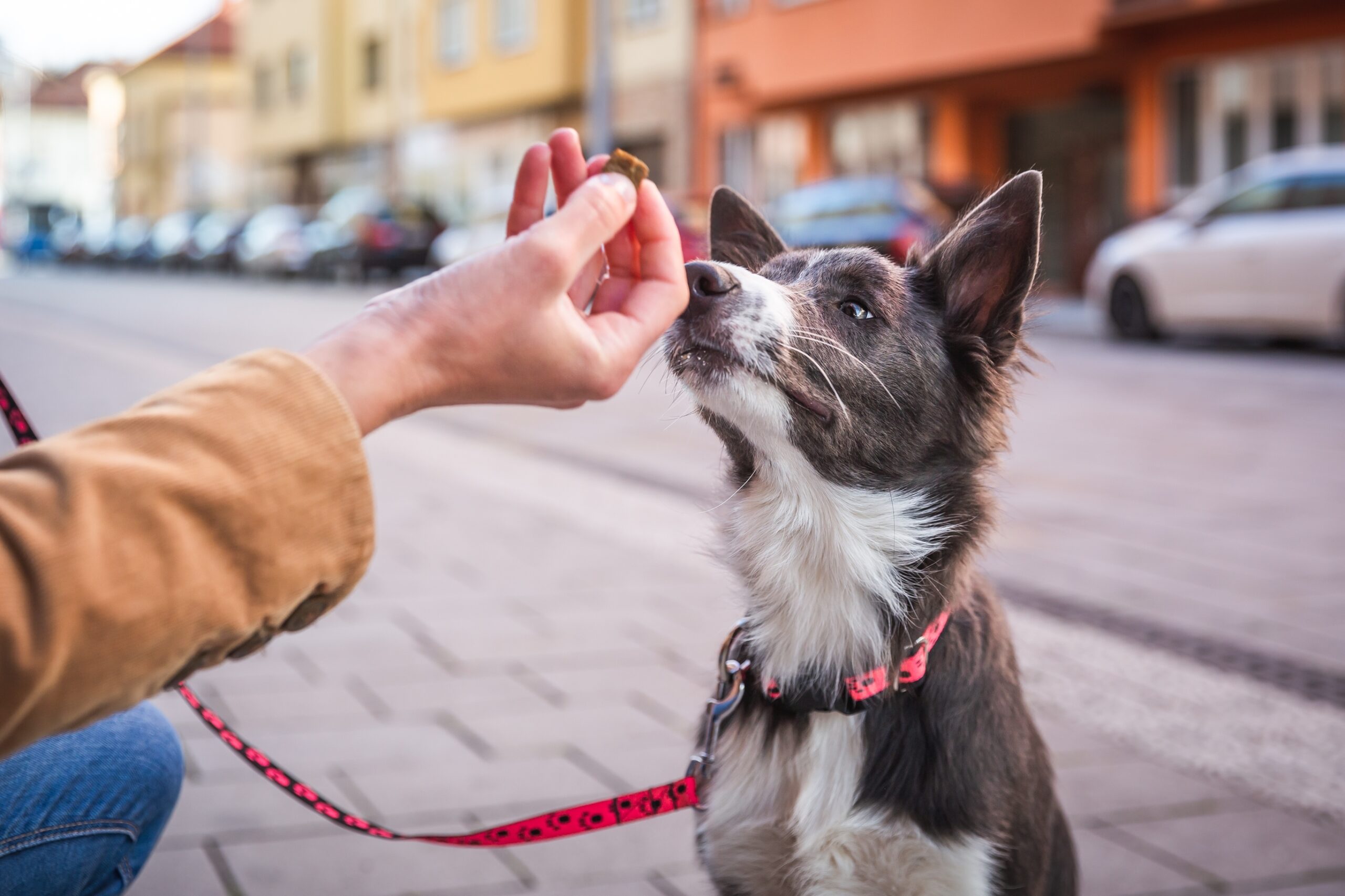 same appropriate leash behavior that you practiced inside in a quiet and minimally distracting environment outdoors. A driveway, deck, or porch is a great place to get started. Work on the circle heel just as you did indoors, feeding every few steps at first in the new environment.
same appropriate leash behavior that you practiced inside in a quiet and minimally distracting environment outdoors. A driveway, deck, or porch is a great place to get started. Work on the circle heel just as you did indoors, feeding every few steps at first in the new environment.
After successfully working through this portion of training, you are ready for a walk outside. We recommend short walks to start: pick the least congested, and take the same route every time. Bring treats with you and continue to reward your dog remaining at your side. Be generous! (If you are worried about calories, subtract the amount of meal-equivalent treats you used from your dog’s meals.)
Be a “Tree”
It will take time to teach your dog not to pull. In the meantime, teach them a simple rule: if the leash gets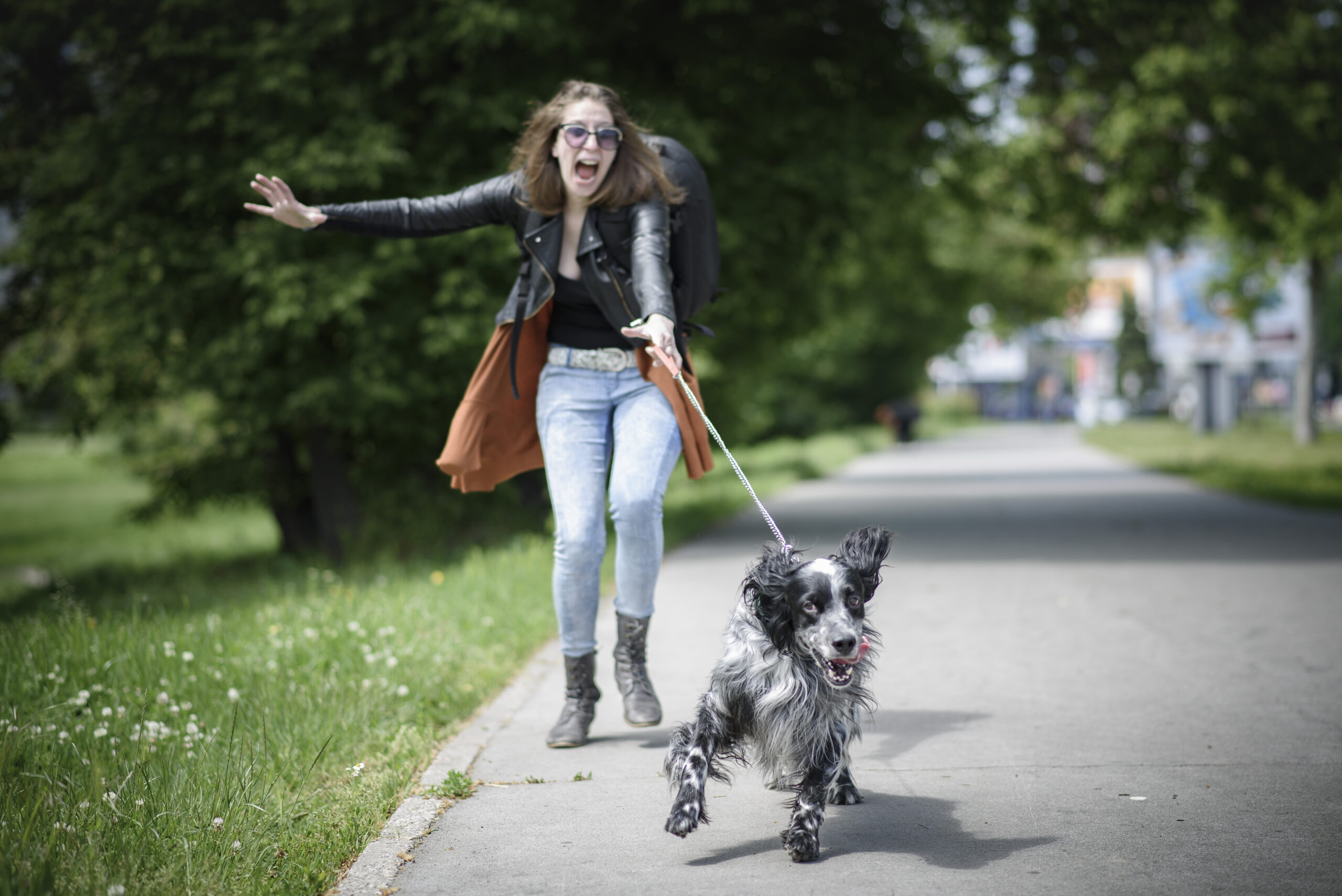 tight, you will stop. In short, you need to be a “tree.”
tight, you will stop. In short, you need to be a “tree.”
- Give your dog the amount of leash you want. The amount will depend on the environment: less on the sidewalk, more at the park, but the rule is the same. If the leash gets tight, stop.
- Wait until the dog sits, looks back at you, or takes a step back; anything that makes the leash loose.
- Then praise and start walking.
Beware: if the dog pulls, you call them back and then treat them at your side. You are rewarding the pulling! (This is called a behavior “chain.”) If you do call them back to your side, do not reward them. Walking your dog should ideally consist of some healing practice, some letting the dog sniff around, and some plain old walking.
Safety and Equipment
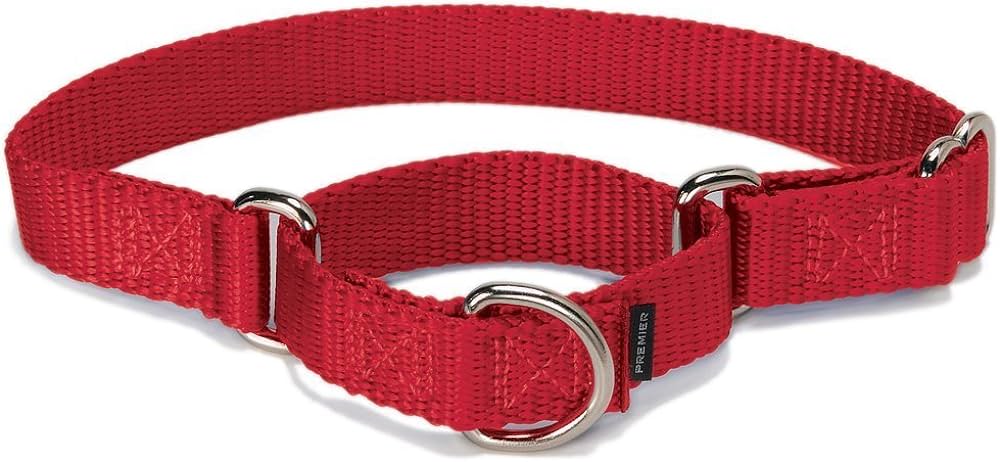 There are a lot of dog walking safety products available to purchase, but remember, no piece of equipment is a substitute for training your dog to walk on a loose leash, as described above.
There are a lot of dog walking safety products available to purchase, but remember, no piece of equipment is a substitute for training your dog to walk on a loose leash, as described above.
Collars: A flat buckle collar or martingale collar (pictured left) is recommended. Chain or prong collars can cause behavior problems: if the dog lunges at something and the collar tightens around the dog’s neck, it can apply an aversive sensation that can frighten the dog, or even make them associate what they are lunging at with the aversive experience. This can cause fear or increase reactivity as the dog lunges proactively to keep others away.
Make sure you test as to whether your dog can pull their head out of the collar and that it has updated contact information. Also, make sure your dog is microchipped. Even with proper safety equipment, such as a well-fitting harness and a martingale collar, products fail. It is important to have your contact information up to date for any emergency.
Harnesses: Note that a back clip gives you little control over the front end of your dog; a front clip gives you more. Some harnesses have both front and back clips and can be used with a double-clip leash, and many owners find this a good combination. Make sure to tighten a front-clip-only harness frequently, and clip it to your dog’s collar for backup safety.
Leashes: Flexi-leashes are not recommended. You have little physical control over your dog in an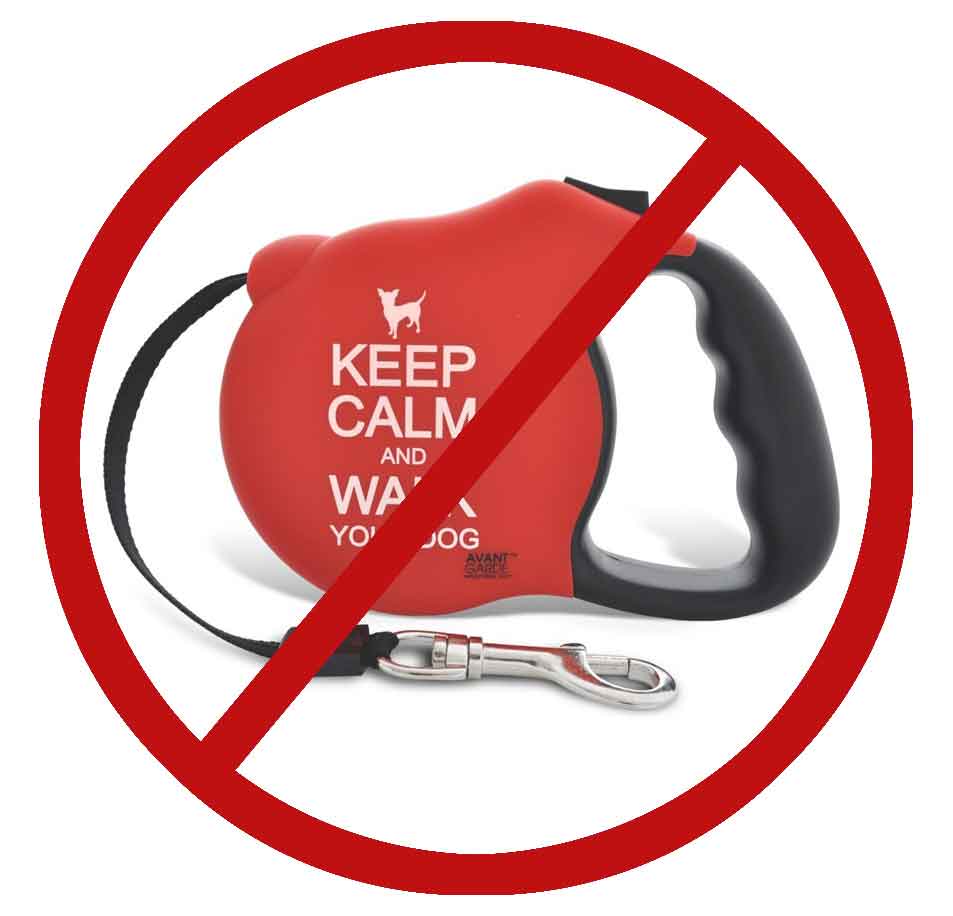 emergency; the cord can break; they teach your dog to pull until you put the brake on, and your dog can quickly get farther away from you than is safe. A four to six-foot leash should be fine; the choices are vast.
emergency; the cord can break; they teach your dog to pull until you put the brake on, and your dog can quickly get farther away from you than is safe. A four to six-foot leash should be fine; the choices are vast.
Head halters: These can be helpful management tools for specific behavioral issues. They should not be used “correctively,” e.g., do not snap the head harness to turn your dog’s head toward you. For a dog who jumps up a lot, a Gentle Leader can help you to gently hold their head downwards at times until they are trained not to jump. For a super-strong puller, a Sporn head harness, which clips behind the dog’s head, is helpful.
x
A final word: walking your dog should be fun for both of you! Reach out to us for help with training your dog at www.mspca.org/dogtraining.



